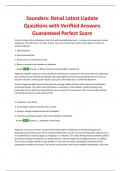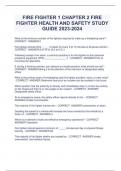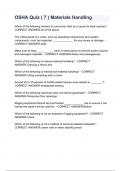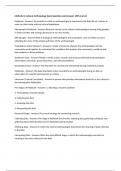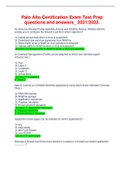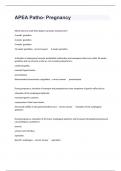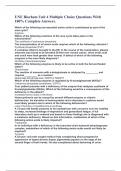Exam (elaborations)
URINARY SAUNDERS Latest Update Questions with Correct Answers Guaranteed Pass
- Course
- Institution
URINARY SAUNDERS Latest Update Questions with Correct Answers Guaranteed Pass A 1-year-old child is diagnosed with intussusception. The mother of the child asks the nurse to describe the disorder. The nurse should base the response on which description of this disorder? - Answer - A condition ...
[Show more]
